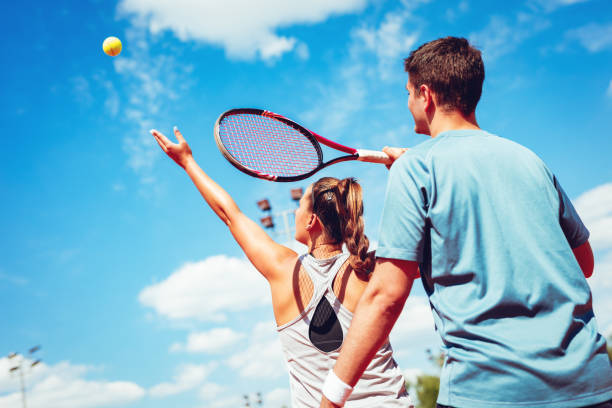One of the most noticeable trends in gyms across the country is the addition of sports facilities to their standard gym equipment for members to use. Perhaps this is in response to the numerous country clubs across the country which now offer gyms and workout equipment as an addition to their racquetball courts. It’s not surprising that many gyms today also offer various racquetball courts, such a for pickleball, squash, and even tennis. These include gyms such as In-Shape Gym, which also offer swimming pools and courts for pickleball and tennis.
That’s great for lots of tennis players, actually. That’s because tennis players need strength to excel in their sports, and playing tennis involves several types of muscular strength. If you’re a tennis player, you need force behind your precision strikes. You also need the explosive strength for lateral movements across the tennis court. Then you need endurance to last an entire match, which can be quite intense.
Tennis players, like many athletes, will do best with a balanced workout for the entire body. Here are some exercises you can do if you’re a tennis player, regardless of whether you’re a tennis newbie or a pro:
Goblet Squat
Squats are an essential exercise for your lower body, and this can develop the strength you need for your powerful shots. Both expert and newbie athletes can benefit from doing goblet squats.
Goblet squats are useful because they focus on your quads and glutes. These squats also work the muscles in your arms and your core. All in all, it’s a nice, well-rounded exercise that works on the muscle groups that tennis players need to develop.
Bench Press
Perhaps no other exercise will work as effectively to develop your upper body strength as the bench press. You just need to make sure that you do it right. The bench press is a powerful compound exercise that basically involves all the crucial muscle groups that you use to serve up killer aces. These muscle groups include the shoulders, the triceps, and the chest.
You really should make sure you do your bench presses properly, or else the exercise won’t be as effective. Worse, you might even hurt yourself. If you’re a newbie to the bench press, you should first master the movement. You can do that with easy, lightweight dumbbells before you head on to the more challenging, heavier weights.
Lateral Lunge
If you even just watch a lot of tennis matches, you won’t fail to notice that the game really involves a lot of lateral movement. Moving from side to side is a huge part of tennis, yet somehow, it’s as if this fact is forgotten by quite a few strength programs for tennis players. You must remember this, and this is where the lateral lunge comes in.
By doing lateral lunges, you’re working on your whole lower body. The exercise works on the hips, knees, hip abductors, and the glutes.
Again, if you’re new to this exercise then you really should master the basic movement first. Once you have that down, you can then make it more challenging by adding a barbell or dumbbells to boost the intensity.
Box Jump
This is actually quite a fun exercise, since it involves lots of jumping around. It’s also a low-impact exercise for your knees, but it has a huge effect on your hamstrings, glutes, and quads. The movement is quite simple: you just jump from the floor up to an elevated surface, such as a solid box.
This exercise can really help you prepare for the explosive diving and jumping movements you need to counter powerful strokes from your opponent. Also, the exercise enhances your ability to absorb the impact when you touch back down on the ground after your jump. That’s a crucial ability, since it will reduce the risk of injuries to your legs and feet.
Internal and External Rotations
Rotator cuff injuries and other shoulder injuries are actually quite common among tennis players. That’s because the rotator cuff is made up of 4 muscles and tendons that allow your arm to roll in its shoulder socket fluidly. If you’re a serious tennis player who really puts extra effort into each swing, then you’re constantly stressing those muscles.
That can lead to strained or torn muscles, which can then make it painful to continue playing. The pain can be so bad that it may be impossible to return to the match.
But by strengthening those 4 crucial muscles, you can help reduce the chances of rotator cuff injuries. And you can do that with internal and external rotations while using dumbbells. You don’t really have to use heavy weights for this exercise, and you can do the rotations while lying down or standing up.
